Happy not-so-new year and other lovely things
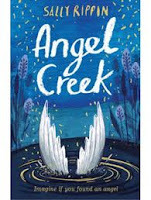 I don't know about you, but I always feel like my year begins properly on the first of February, rather than the first of Jan. My kids are back at school, I can begin to get stuck into work again and start to cross things off my list of things to do.
I don't know about you, but I always feel like my year begins properly on the first of February, rather than the first of Jan. My kids are back at school, I can begin to get stuck into work again and start to cross things off my list of things to do.February is also the time new books come out, to coincide with the beginning of the new school year - at least in the southern hemisphere. This month, I am excited to have two books released into the wild, on opposite sides of the world. Meet Lina arrives in bookstores across Australia today and Angel Creek should be making an appearance on bookshelves around the UK any day now. I have my fingers tightly crossed that these books will find readers who love Jelly and Lina as much as I do.
There are three more Lina books on the way, but meanwhile, here is an interview I did with a UK publication about Angel Creek. Happy not-so-new year!
1. What sparked the idea of ‘creek angels’?
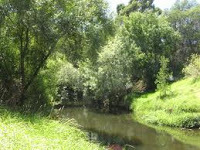 One summer, I had been grappling with a longer, older novel that was causing me much anguish, when I was contacted by a newspaper to write a fiction story for children. To clear my head and get some ideas, I took my youngest son for a long walk along the Merri Creek, which runs not far from our house. We started chatting about what a mystical, magical place the creek was and what incredible things might be lying in its muddy depths without us knowing. I wrote a short story for the paper about some children finding an angel in the creek, then tried to turn my attention back to my novel. To my delight, over the next few weeks I received so many wonderful letters from children about my angel story that I decided to abandon my angsty novel for good and instead began writing what eventually became Angel Creek.
One summer, I had been grappling with a longer, older novel that was causing me much anguish, when I was contacted by a newspaper to write a fiction story for children. To clear my head and get some ideas, I took my youngest son for a long walk along the Merri Creek, which runs not far from our house. We started chatting about what a mystical, magical place the creek was and what incredible things might be lying in its muddy depths without us knowing. I wrote a short story for the paper about some children finding an angel in the creek, then tried to turn my attention back to my novel. To my delight, over the next few weeks I received so many wonderful letters from children about my angel story that I decided to abandon my angsty novel for good and instead began writing what eventually became Angel Creek.2. What process did you go through in creating your ‘angels’, which are very unlike the traditional images of angels?
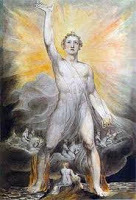 Even though I read a lot of literature about the depiction of angels through the ages, it was very important to me to create something new and unique. I love the idea of nature being wild and unpredictable, full of beauty but also frightening at times, so I decided to make my angel become a reflection of its earthly surrounds. Rather than the ephemeral celestial beings traditionally depicted in art and literature, my angel is mangy and feral, voiceless and terrified, with breath like dirty vase water. But it is worth noting that the angel the children find is only a baby angel, yet to develop its full powers – unlike the force that eventually comes looking for it.
Even though I read a lot of literature about the depiction of angels through the ages, it was very important to me to create something new and unique. I love the idea of nature being wild and unpredictable, full of beauty but also frightening at times, so I decided to make my angel become a reflection of its earthly surrounds. Rather than the ephemeral celestial beings traditionally depicted in art and literature, my angel is mangy and feral, voiceless and terrified, with breath like dirty vase water. But it is worth noting that the angel the children find is only a baby angel, yet to develop its full powers – unlike the force that eventually comes looking for it.3. Why did you want to include this fantasy element alongside very real issues such as starting a new school, family, bullying and illness?
Though I admire writers who can create whole worlds from scratch, I like to work with something familiar and add a fantastical twist. I didn’t intentionally set out to cover a list of particular issues, these are just things I remember being important to me as a child and I imagine are very recognizable to most children. My aim is to create the most believable characters I can so that my readers might ask themselves, ‘What would I do in that situation?’
In some ways, the angel in my book can be read as an allegory for the natural world; scientists are still discovering creatures they could never have dreamed existed, so why not a baby angel? One of the questions in my mind when writing Angel Creek was if you were to find something wild and beautiful would you leave it alone and perhaps risk it dying, or would you interfere with the delicate balance of nature and then face the unknown consequences of your actions?
4. You explore the transition from childhood to early teens – what interests you about that age range?
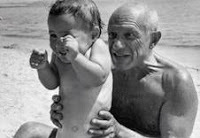 I remember as a child being fascinated by the story of Puff the Magic Dragon and could never understand how Jackie Paper could abandon something so wild and magical. Of course as an adult I understand that he was giving up his childhood to become an adult. While there is obviously much to be gained by growing up, there is also an enormous amount lost, in particular the creativity, imagination and a deep sense of wonder that we are all born with but eventually dies if we forget to feed it. Often this happens during that transition period from childhood to teenager, when we become so quick to scoff at things that had once been so fundamental. Then, as an adult, we can only strive our whole lives to try to gain some of this back again. As Picasso famously said: ‘We are all born artists, the only difficulty is how to remain one’.
I remember as a child being fascinated by the story of Puff the Magic Dragon and could never understand how Jackie Paper could abandon something so wild and magical. Of course as an adult I understand that he was giving up his childhood to become an adult. While there is obviously much to be gained by growing up, there is also an enormous amount lost, in particular the creativity, imagination and a deep sense of wonder that we are all born with but eventually dies if we forget to feed it. Often this happens during that transition period from childhood to teenager, when we become so quick to scoff at things that had once been so fundamental. Then, as an adult, we can only strive our whole lives to try to gain some of this back again. As Picasso famously said: ‘We are all born artists, the only difficulty is how to remain one’.5. You also explore how actions and even thoughts have consequences – do you feel that learning this is an important part of this transition?
Oh boy, this is something I think we never stop learning. I wish I could have learnt all that I needed to know about this when I became an adult but I’m afraid I still have a long way to go! The idea that we can change our thoughts to change ourselves, not just mentally but also physically, is something that is both inspiring and daunting.
6. There are quite profound questions around death in Angel Creek – how hard did you find it to tackle this in a way that worked for children?
I think we often underestimate how much children think about death – I was certainly more preoccupied with death as a child than I am as an adult, but often as much out of curiosity as fear. I don’t believe there are any areas that are necessarily out of bounds in writing for children, as long as this is done with sensitivity and insight. Birth and death are fascinating themes to explore for all writers, whether literally or metaphorically, and most authors I admire would never shy away from tackling profound questions just because they are writing for children. In fact often these momentous themes are explored more directly and with more honesty than in adult literature.
7. Your favourite character?
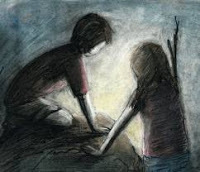 Jelly, naturally comes to mind first, because she is the protagonist and we see the whole story through her eyes, but I also have a deep fondness for Gino and Pik. Gino, because he is trying hard to work out what it is to be a man while growing up in the shadow of his bullying father, and Pik, just because he is adorable.
Jelly, naturally comes to mind first, because she is the protagonist and we see the whole story through her eyes, but I also have a deep fondness for Gino and Pik. Gino, because he is trying hard to work out what it is to be a man while growing up in the shadow of his bullying father, and Pik, just because he is adorable.8. Is the book reminiscent at all of your own childhood?
Everything I write for children stems initially from my own childhood then takes on a life of its own, often fed by the experiences of my own three children. Beginning with my own experience helps me write from a child’s perspective with authenticity and not trivialize what might seem unimportant now. However, unlike Jelly, I spent much of my childhood living in South-East Asia, moving almost every two years because of my father’s job. Even though we mainly lived in apartments in very big cities, my father still managed to find us scraps of nature to explore and instilled in me a deep love of the natural environment that I think comes out in Angel Creek.
9. You are both an illustrator and writer – how visual are you when planning / writing stories for older children, as well as your picture books?
Being able to visualize my story is very important to me. I know things are working when I can see the setting and characters as if they were real and my job is only to write down their story.
10. What are your links with Italy, as you feature Italian characters in your stories?
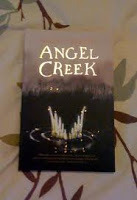 My partner was born in Melbourne, Australia, but his parents were born in Calabria, Italy. They speak little English and remain very traditionally Italian even though they have been living in Australia for almost fifty years now. I love being a part of Raffaele’s big, loud extended family as they are so different from mine and many of the characters in Angel Creek are inspired by his family.
My partner was born in Melbourne, Australia, but his parents were born in Calabria, Italy. They speak little English and remain very traditionally Italian even though they have been living in Australia for almost fifty years now. I love being a part of Raffaele’s big, loud extended family as they are so different from mine and many of the characters in Angel Creek are inspired by his family.11. How does your writing day go – any bad habits?
I am an awful procrastinator. I begin my day by spending way too much time on Facebook, reading stuff on the internet and feeling sick with guilt about wasting time. Then, when half my day is gone and it is almost time for my kids to get home from school, I’ll have a sudden burst of productivity and usually just be getting into a flow by the time they come through the front door, wanting my attention. Occasionally, if I have a deadline I might make myself go to the public library where I can’t get onto the internet and force myself to concentrate solely on my novel.
12. What do you do to relax when you’re not writing?
Spend time in the garden, walk along the Merri Creek, visit friends, hang out with my kids. Bungee jump – (no, not really. I hate heights!)
13. What are you writing now?
I am writing a series of historical fiction novels set in Melbourne in 1956 – a big year as it was the year of the Olympic Games and also the arrival of television. My character is a twelve-year-old girl called Lina whose parents have recently arrived from Italy. I am also always busy writing more books for my Billie B Brown and Hey Jack series for younger readers.
14. There are a number of very inspiring Australian writers – what did you read as a child / teenager (I remember reading My Brilliant Career then), and which writers were most inspiring to you?
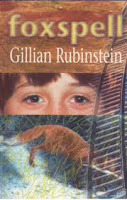 I think I read mainly American and English books when I was growing up. I loved Roald Dahl and Enid Blyton when I was younger, Judy Blume and Paul Zindel as a teenager. I never really got into The Muddle-Headed Wombat or Snugglepot and Cuddlepie, though I do remember loving Colin Thiele’s Storm Boy. Really, I only came to appreciate Australian authors when I began to write myself. A publisher I first approached at Penguin in the early 1990s, handed me a stack of Australian YA including Sonya Hartnett, Gillian Rubinstein, Melina Marchetta and Robin Klein, and from then on I was hooked. Now, many of my favourite authors are Australian and I think the children’s writing scene here is a particularly exciting one to be a part of.
I think I read mainly American and English books when I was growing up. I loved Roald Dahl and Enid Blyton when I was younger, Judy Blume and Paul Zindel as a teenager. I never really got into The Muddle-Headed Wombat or Snugglepot and Cuddlepie, though I do remember loving Colin Thiele’s Storm Boy. Really, I only came to appreciate Australian authors when I began to write myself. A publisher I first approached at Penguin in the early 1990s, handed me a stack of Australian YA including Sonya Hartnett, Gillian Rubinstein, Melina Marchetta and Robin Klein, and from then on I was hooked. Now, many of my favourite authors are Australian and I think the children’s writing scene here is a particularly exciting one to be a part of.
Published on January 31, 2013 14:51
No comments have been added yet.



